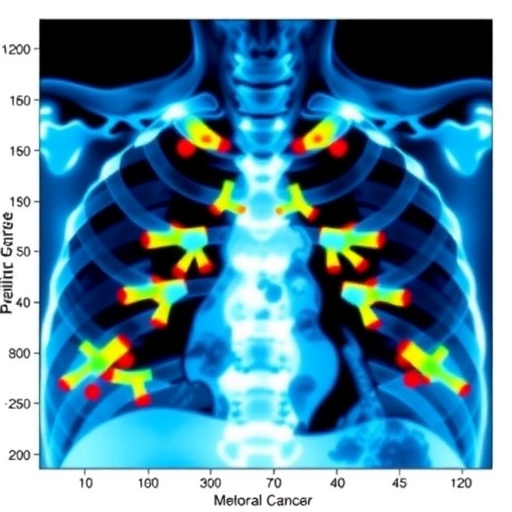A new study by G. William Arends Professor of Microbiology at the University of Illinois Bill Metcalf with postdoctoral Fellow Dipti Nayak has documented the use of CRISPR-Cas9 mediated genome editing in the third domain of life, Archaea, for the first time. Their groundbreaking work, reported in Proceedings of the National Academy of Sciences, has the potential to vastly accelerate future studies of these organisms, with implications for research including global climate change. Metcalf and Nayak are members of the Carl R. Woese Institute for Genomic Biology at Illinois.
"Under most circumstances our model archaeon, Methanosarcina acetivorans, has a doubling time of eight to ten hours, as compared to E. coli, which can double in about 30 minutes. What that means is that doing genetics, getting a mutant, can take months–the same thing would take three days in E. coli," explains Nayak. "What CRISPR-Cas9 enables us to do, at a very basic level, is speed up the whole process. It removes a major bottleneck… in doing genetics research with this archaeon.
"Even more," continues Nayak, "with our previous techniques, mutations had to be introduced one step at a time. Using this new technology, we can introduce multiple mutations at the same time. We can scale up the process of mutant generation exponentially with CRISPR."
CRISPR, short for Clustered Regularly Interspaced Short Palindromic Repeats, began as an immune defense system in archaea and bacteria. By identifying and storing short fragments of foreign DNA, Cas (CRISPR-associated system) proteins are able to quickly identify that DNA in the future, so that it can then quickly be destroyed, protecting the organism from viral invasion.
Since its discovery, a version of this immune system–CRISPR-Cas9–has been modified to edit genomes in the lab. By pairing Cas9 with a specifically engineered RNA guide rather than a fragment of invasive DNA, the CRISPR system can be directed to cut a cell's genome in an arbitrary location such that existing genes can be removed or new ones added. This system has been prolifically useful in editing eukaryotic systems from yeast, to plant, to fish and even human cells, earning it the American Association for the Advancement of Science's 2015 Breakthrough of the Year award. However, its implementation in prokaryotic species has been met with hurdles, due in part to their different cellular processes.
To use CRISPR in a cellular system, researchers have to develop a protocol that takes into account a cell's preferred mechanism of DNA repair: after CRISPR's "molecular scissors" cut the chromosome, the cell's repair system steps in to mend the damage through a mechanism that can be harnessed to remove or add additional genetic material. In eukaryotic cells, this takes the form of Non-Homologous End Joining (NHEJ). Though this pathway has been used for CRISPR-mediated editing, it has the tendency to introduce genetic errors during its repair process: nucleotides, the rungs of the DNA ladder, are often added or deleted at the cut site.
NHEJ is very uncommon in prokaryotes, including Archaea; instead, their DNA is more often repaired through a process known as homology-directed repair. By comparing the damage to a DNA template, homology-directed repair creates what Nayak calls a "deterministic template"–the end result can be predicted in advance and tailored to the exact needs of the researcher.
In many ways, homology-directed repair is actually preferable for genome editing: "As much as we want CRISPR-Cas9 to make directed edits in eukaryotic systems, we often end up with things that we don't want, because of NHEJ," explains Nayak. "In this regard, it was a good thing that most archaeal strains don't have a non-homologous end joining repair system, so the only way DNA can be repaired is through this deterministic homologous repair route."
Though it may seem counter-intuitive, one of Nayak and Metcalf's first uses of CRISPR-Cas9 was to introduce an NHEJ mechanism in Methanosarcina acetivorans. Though generally not preferable for genome editing, says Nayak, NHEJ has one use for which it's superior to homologous repair: "If you just want to delete a gene, if you don't care how … non-homologous end joining is actually more efficient."
By using the introduced NHEJ repair system to perform what are known as "knock-out" studies, wherein a single gene is removed or silenced to see what changes are produced and what processes that gene might affect, Nayak says that future research will be able to assemble a genetic atlas of M. acetivorans and other archaeal species. Such an atlas would be incredibly useful for a variety of fields of research involving Archaea, including an area of particular interest to the Metcalf lab, climate change.
"Methanosarcina acetivorans is the one of the most genetically tractable archaeal strains," says Nayak. "[Methanogens are] a class of archaea that produce gigatons of this potent greenhouse gas every year, play a keystone role in the global carbon cycle, and therefore contribute significantly to global climate change." By studying the genetics of this and similar organisms, Nayak and Metcalf hope to gain not only a deeper understanding of archaeal genetics, but of their role in broader environmental processes.
In all, this research represents an exciting new direction in studying and manipulating archaea. "We began this research to determine if the use of CRISPR-Cas9 genome editing in archaea was even possible," concludes Nayak. "What we've discovered is that it's not only possible, but it works remarkably well, even as compared to eukaryotic systems."
###
Media Contact
Nicholas Vasi
[email protected]
@IGBIllinois
http://www.igb.uiuc.edu
############
Story Source: Materials provided by Scienmag




